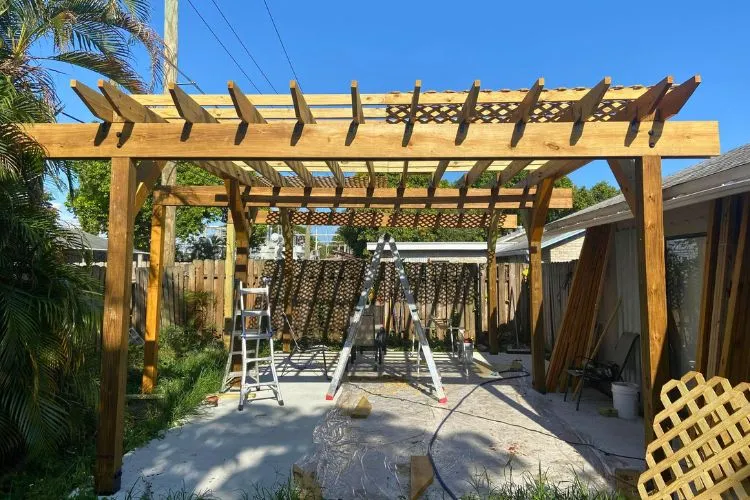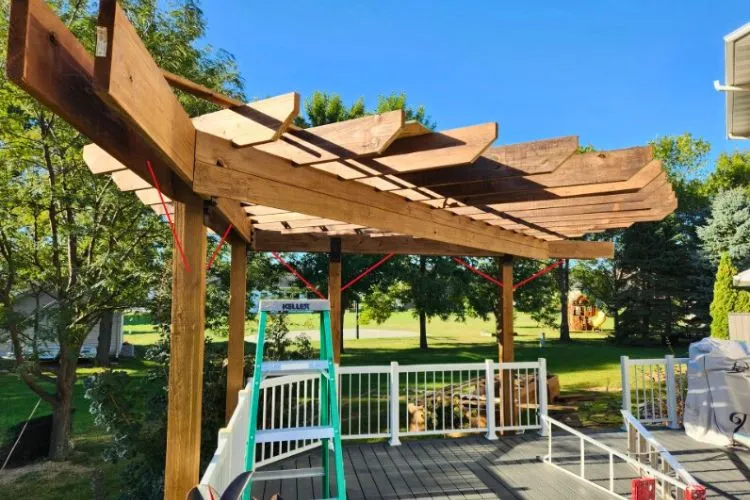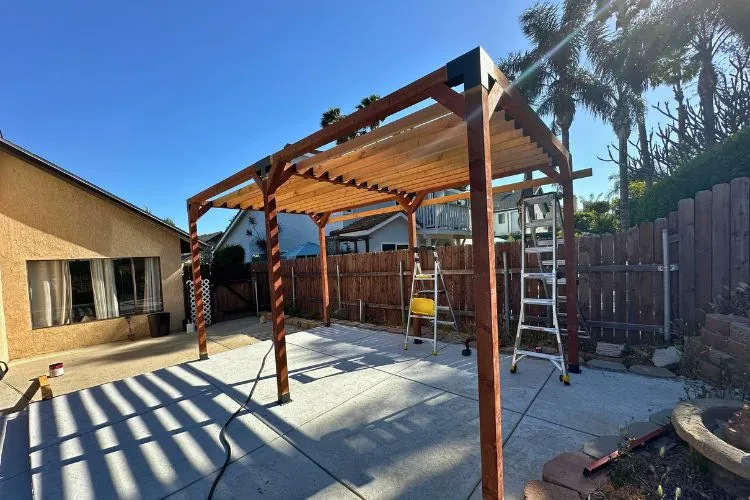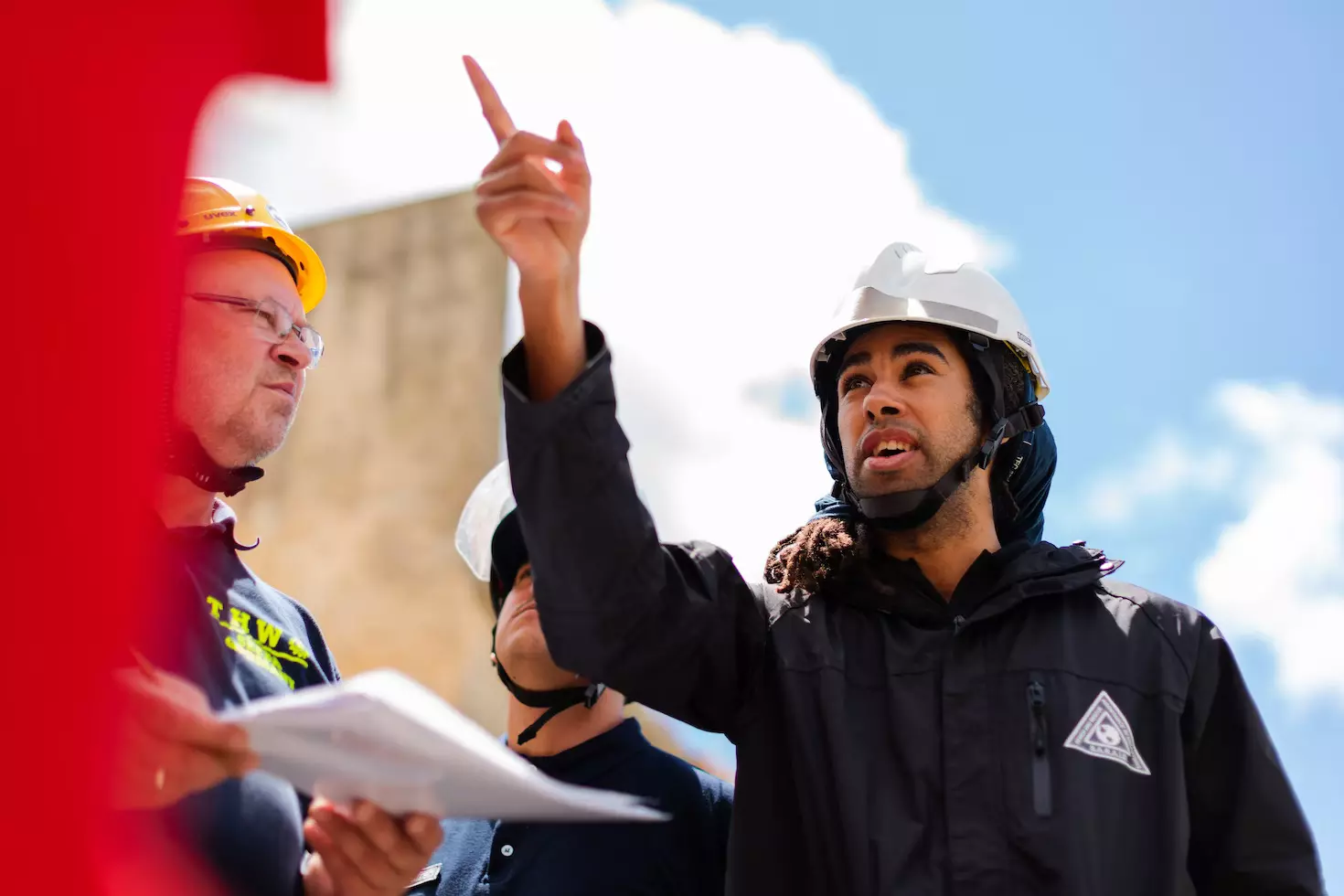Pergolas are a beautiful and functional addition to any outdoor space, offering shade and a perfect place to gather.
However, a common issue many homeowners face is that their pergola may wobble from time to time. Should a pergola wobble? The answer is no—stability is key.
Pergolas are a beautiful addition to any outdoor space, offering shade and a place to gather. However, a common issue is that it may wobble sometimes. So, should pergola wobble? Not really.
Stability in a pergola is crucial for safety and to prolong the lifespan of the structure. This article addresses the causes of pergola wobble and provides guidance on how to fix it.

Contents
- 1 Should Pergola Wobble?
- 2 Safety and Stability Assessment
- 3 Common Causes of Pergola Wobble
- 4 Step-by-Step Guide to Fix a Wobbly Pergola
- 5 Prevention Strategies for Pergola Wobble
- 6 Choosing the Right Materials for Your Pergola
- 7 Evaluating Soil Types for Pergola Installation
- 8 Long-Term Care and Maintenance
- 9 Call-to-Action
- 10 Frequently Asked Questions (FAQs)
Should Pergola Wobble?
No, a properly installed pergola should not wobble. If your pergola is wobbling, it indicates that it may not be securely anchored to the ground or that there is an issue with the structural integrity of the materials used.
It’s important to ensure that all connections are tight and that the pergola is constructed on a stable, level base.
Wobbling can be a safety hazard, so it’s crucial to address any stability issues promptly. Consider consulting a professional to assess and rectify the problem, ensuring your pergola remains a safe and enjoyable addition to your outdoor space.
Safety and Stability Assessment
It’s vital to assess the stability of your pergola. Inspect the structure for loose parts or damage. If the pergola moves with a gentle push, it might need reinforcement. However, if it shakes vigorously, it’s time to address this issue more seriously.
Common Causes of Pergola Wobble
Several factors can contribute to a pergola’s instability:
- Inadequate foundation can lead to shifting and wobbling.
- Over time, joints may loosen, causing instability.
- Materials not suitable for the structure’s size or environmental conditions can also lead to issues.
Step-by-Step Guide to Fix a Wobbly Pergola

Securing the Foundation
Start with the base. If the foundation isn’t solid, the entire structure will be unstable. This could mean pouring concrete footings or ensuring that the posts are anchored securely.
Tightening and Reinforcing Joints
Check all the connections between beams and posts. Over time, these can become loose. Tightening them can improve stability. If the joints are weak, consider reinforcing them with additional hardware.
Adding Bracing and Supports
Cross-bracing can add rigidity to the structure. Installing braces at the corners can fix wobbling and make the pergola more robust.
Pro Tips for Maintaining Structural Integrity
Regular maintenance checks are essential. Tighten bolts and screws annually, and inspect the wood for rot or pests.
You may also find useful: Arbor vs Pergola | How To Strengthen A Pop Up Gazebo?
Prevention Strategies for Pergola Wobble
Preventing wobble begins at the design stage:
- Opt for a design that incorporates stability features.
- Choose materials that are strong enough to withstand the elements and the weight of the structure.
- Regular maintenance is crucial to spot problems before they escalate.
Choosing the Right Materials for Your Pergola
When constructing or repairing a pergola, the choice of material is crucial. Wood, like cedar or redwood, is a traditional pick due to its natural beauty and resistance to rot, but it requires regular maintenance to preserve its integrity.
Pressure-treated wood is a cost-effective alternative with enhanced durability. Metals, such as aluminum or steel, offer superior strength and minimal maintenance but might require additional treatment to prevent rust in certain climates.
For a modern approach, composite materials are gaining popularity. These are engineered for longevity, resisting warping, and fading, but may come at a higher cost.
Always consider the specific load requirements for your design to ensure your material can support the additional weight of plants or fabric coverings.
Ultimately, the choice should align with the environmental conditions of your locale and personal aesthetics, striking a balance between functionality, maintenance, and style.
Evaluating Soil Types for Pergola Installation
The type of soil in your garden significantly affects the stability of a pergola’s foundation. Soils like clay, which expands and contracts depending on moisture, can undermine the foundation over time, leading to settling or shifting.
Sandy or gravelly soils, although well-draining, may not offer enough support by themselves, requiring deeper footings or additional stabilization techniques. Loamy soil, with a balance of sand, silt, and clay, is generally ideal as it provides both support and drainage.
When installing a pergola, assess the soil type and consider if enhancements are needed, such as compacting the soil or adding gravel for drainage. For weaker soils, installing deeper footings or using concrete to anchor the posts can provide the necessary stability.
Always consult local building codes and consider hiring a professional to conduct a soil test if you are unsure of the best foundation strategy for your pergola.
Long-Term Care and Maintenance
Regular upkeep is crucial for prolonging the life of your pergola and maintaining its safety and beauty. Annually inspect the entire structure for signs of wear, weather damage, or pest infestations.

Especially after harsh weather conditions, check for loosened bolts or screws and tighten them as needed to prevent wobbling. For wooden pergolas, apply a water-repellent sealant every few years to protect against moisture and sun damage.
Staining or painting periodically can also help shield the wood from the elements while enhancing its aesthetic value. Metal pergolas might require rust protection treatments and a check for paint chipping which can expose the material to corrosion.
Seasonal cleaning is also essential; remove debris and cobwebs and clean the structure with a soft brush and mild soapy water. Taking these steps will ensure your pergola remains a sturdy and inviting feature in your outdoor space for years to come.
Call-to-Action
If you’re still uncertain about your pergola’s stability or are planning to build one, consider reaching out to a professional for advice. Stay up to date with our latest DIY tips and home improvement solutions by signing up for our newsletter.
Frequently Asked Questions (FAQs)
What level of movement is normal for a freestanding pergola?
A slight sway in windy conditions is ordinary. However, if it moves with a light push, you may need to reinforce it.
How can I strengthen my pergola’s foundation?
Your foundation might need to be deeper, or it may require more substantial footings. In some cases, securing post anchors with concrete can add strength.
Can adding weight to a pergola prevent wobbling?
While adding weight may seem like a solution, it is not recommended. Extra weight can cause more pressure on an already unstable structure.
Is it necessary to use 6×6 posts for a stable pergola?
While 6×6 posts are not always necessary, using them can enhance stability for larger structures.
Conclusion:
A wobbly pergola is more than just an aesthetic issue; it’s a safety concern. By identifying the causes and addressing them with these guidelines, you can secure your pergola and enjoy your outdoor space without worry.

Sergio Gomes, a passionate advocate for outdoor living and the male voice behind Shades Authority. With years of experience, Sergio is your trusted source for expert insights on gazebos, pavilions, cabanas, pergolas, and all things outdoor shade solutions. Join him on a journey to transform your outdoor spaces into stunning, functional retreats
